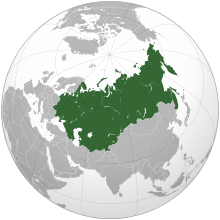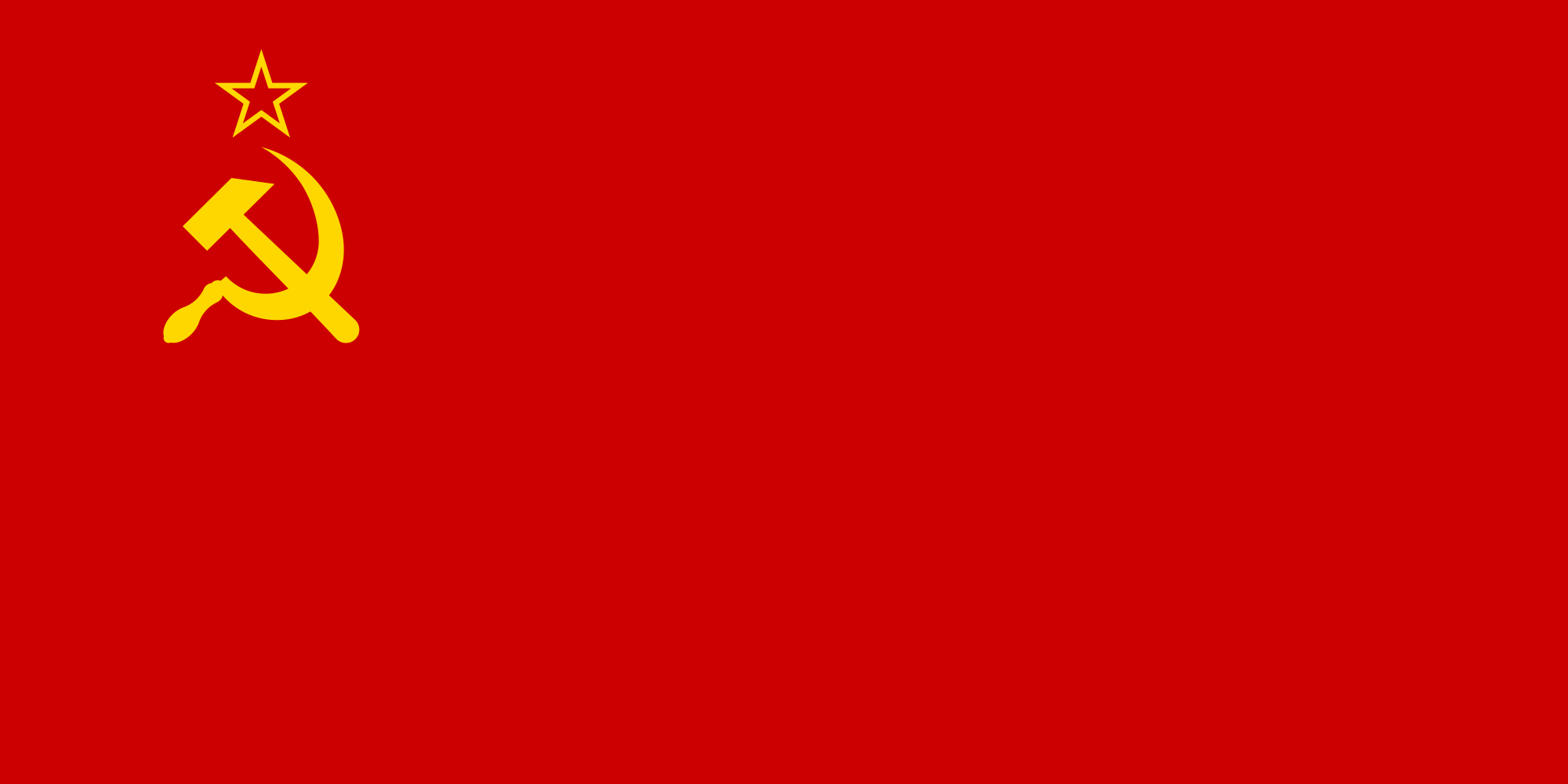Союз Советских Социалистических Республик | |
|---|---|
 | |
| Capital and largest city | Moscow |
| Government | Federal Marxist–Leninist socialist state |
• Notable leaderships | Vladimir Lenin (1922–1924) Joseph Stalin (1924–1953) |
| History | |
• October Revolution | 1917 November 7th |
| 1922 December 30th | |
• World War II victory | 1945 May 9th |
• Dissolution | 1991 December 26th |
| Population | |
• 1989 estimate | 285,742,511[1] |
| Labour | |
• Labour force | 152.3 million[2] |
• Occupation | 80% industry and other nonagricultural fields 20% agriculture[2] |
• Unemployment rate | 1–2%[3] |
| GDP (nominal) | 1989 estimate |
• Total | $2.66 trillion[2] (2nd) |
• Per capita | $9,211[4] |
| Exports | 1988 estimate |
• Value | $110.7 billion[2] |
• Commodities | Petroleum and petroleum products, natural gas, metals, wood, agricultural products, and a wide variety of manufactured goods (primarily capital goods and arms)[2] |
• Partners | Eastern Europe (49%), Western Europe (14%), Cuba (5%), United States[2] |
| Imports | 1988 estimate |
• Value | $107.3 billion[2] |
• Commodities | Grain and other agricultural products, machinery and equipment, steel products (including large-diameter pipe), consumer manufactures[2] |
• Partners | Eastern Europe (43%), Western Europe (18%), Cuba, China, United States[2] |
| Currency | Soviet ruble (РУБ) |
The Soviet Union, officially known as the Union of Soviet Socialist Republics (USSR) [Russian: Союз Советских Социалистических Республик (СССР)], was a Marxist-Leninist federal socialist state that existed in Eurasia from 1922 to 1991.
The USSR was established in 1922 as a union of four Soviet socialist republics formed after the October Revolution of 1917, the Russian SFSR, the Transcaucasian SFSR, the Ukrainian SSR and the Byelorussian SSR. From 1956 to 1991, the union had 15 member nations in total.
The Soviet Union developed under conditions of extreme pressure provoked by capitalist powers, from the Russian Civil War the Nazi invasion, and espionage from the West. Besides the difficulties that it faced, the USSR managed to provide a positive political role for the working people, especially in a time when workers in the capitalist world were still struggling for basic union rights. The USSR also played an essential military role in the defeat of fascism in World War II.
The Soviet Union was the subject of some of the most impressive economical achievements in modern history. The socialist system transformed a nation of illiterate and starving peasants into an industrial superpower, with one of the fastest growing economies on Earth, one of the world's best-educated and healthiest populations, and some of the most impressive industrial and technological achievements to date. It provided a very influential model for other socialist nations of the world, such as China, Cuba and Vietnam.
From 1988, many Soviet Socialist Republics seceded from the USSR before its dissolution in 1991. Its past territory is now occupied by the states of Russia, Latvia, Lithuania, Estonia, Belarus, Ukraine, Transnistria, Moldova, Georgia, Azerbaijan, Armenia, Kazakhstan, Uzbekistan, Turkmenistan, Tajikistan, and Kyrgyzstan.
History
Background
World war I
See main article: World War I
October Revolution
See main article: October Revolution
Treaty on formation of the USSR
See main article: Declaration and Treaty on the Formation of the Union of Soviet Socialist Republics
World War II
See main article: World War II
Cold War
See main article: Cold War
Dissolution
See main article: Dissolution of the USSR
Economy
Planning
Agriculture
Housing and construction
Industry and manufacturing
Services
Environment
Infrastructure
Transportation
Energy
Science and technology
Demographics
Living standards
Education
Health
Culture
Sports
Film
References
- ↑ Демоскоп Weekly. Всесоюзная перепись населения 1989 года. Национальный состав населения по республикам СССР [The 1989 All-Union Population Census. National composition of the population by republics of the USSR].
- ↑ 2.0 2.1 2.2 2.3 2.4 2.5 2.6 2.7 2.8 CIA World Factbook (1990). Soviet Union – World Factbook (Wikisource)
- ↑ CIA World Factbook (1991). Soviet Union Economy
- ↑ CIA World Factbook (1990). GDP per Capita 1990

